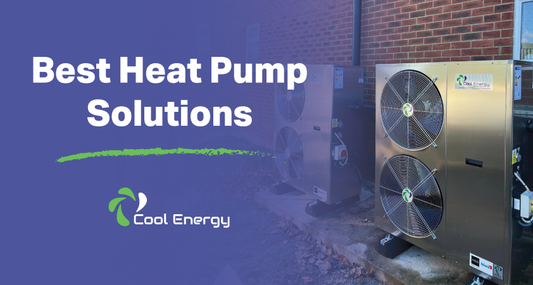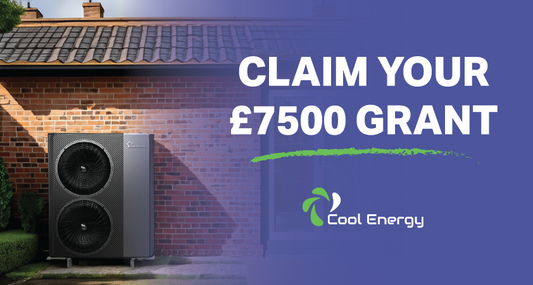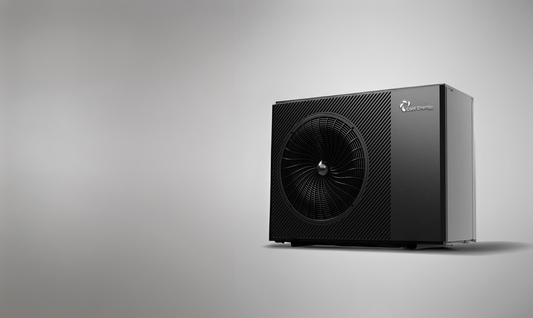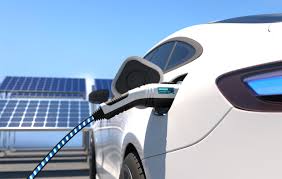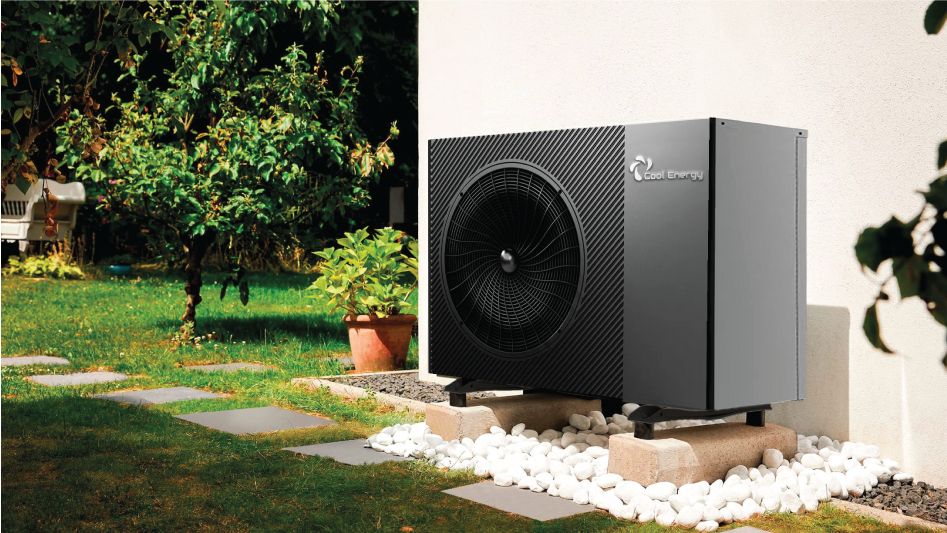
When it comes to heat pump size, bigger isn’t always better.
What size air source heat pump you need will vary but the average home needs a model with an output rating between 4 kW and 16 kW. The same goes for ground source heat pump size too.
Why does heat pump size matter?
Spending some time researching what size air source heat pump or ground source heat pump is right for your home is well worthwhile.
If the output is too low then the heat pump will have to run for longer periods of time to meet demand. On the other hand, a heat pump that’s too powerful for the demands of your home will be turning on and off frequently. This is known as short cycling and puts unnecessary strain on the heat pump which can lead to faults.
The only way for a heat pump to run efficiently and heat your home effectively is if the output rating suits the heating demands of your home. And the best way to do that is by hiring a qualified heat pump installer.
Quick guide to sizing a heat pump
Air source and ground source heat pumps are given output ratings in kilowatts (kW) which represent how powerful a heat pump is. As a general rule, the bigger your home, the higher the heat pump’s output needs to be.
Sizing a heat pump is never simple. There’s no one-size-fits-all as the heating demands of every property and family is unique. To get air source and ground source heat pump size right for your home, it should be assessed by a professional installer based on the following factors:
- Type/size of property
- Level of insulation/heat loss
- Size of radiators or underfloor heating
- Desired indoor temperature
- Seasonal outdoor temperatures in your area
We conducted some industry research and found the following size recommendations to provide you with a rough guide.
| House type | ASHP recommended output (kW) | GSHP recommended output (kW) |
|---|---|---|
| 2 bed house / flat | 5 | 4 |
| Poorly insulated 3 bed house | 9 | 8 |
| Well insulated 4 bed house | 9 | 8 |
| Poorly insulated 4 bed house | 16 | 15 |
| Well insulated 5 bed house | 16 | 15 |
A professional heat pump installer will be able to calculate the right size of heat pump for your home to ensure it can heat your home and hot water all year as efficiently as possible.
A heat pump which is too small will fail to meet demand but don’t go overboard as a heat pump that’s too big will short cycle (turn on and off again and work in short bursts), which isn’t good for efficiency.
While you should always get heat pump quotes from Microgeneration Certification Scheme (MCS) accredited installers, here we’ve outlined the key factors they’ll be using to calculate the right size of heat pump for your home.
How to get the right size heat pump
When working out the most appropriate size for your new heat pump, a heat pump installer will consider many factors, such as:
- Size of your property
- Level of insulation
- Whether you have radiators or underfloor heating
- Your location in the UK
What is the size of your home?
In very general terms, the bigger the home, the bigger the heat pump.
As well as the size of your home, the installer will also consider the property type too. A detached bungalow, for example, may need a different size to a terraced home.
The types of rooms and size of those rooms will also have an impact. This is because, typically, lounges are heated for longer and to a higher temperature than a bedroom.
A heat pump with an output rating between 4 kW and 12 kW is normally more than adequate for most homes in the UK. Then 15 kW and 16 kW heat pumps are a better option for large poorly insulated properties and district heating networks.
How well insulated is your home?
A key factor in heat pump sizing calculations is the level of insulation vs. heat loss in your home.
Traditional boilers heat water to a high temperature and switch off when it has been reached. A heat pump, however, heats water consistently but to a lower temperature.
If your home is poorly insulated, heat will easily escape. As a result, the heat pump will struggle to adequately or efficiently heat your home. A new home with a high level of insulation and double glazing will be able to install a heat pump with a lower output than an older property with poor insulation.
The heat loss level of your home will be calculated by the installer when designing your heat pump system. You’ll need a current Energy Performance Certificate (EPC) to reveal any potential energy efficiency issues with the home, and once the heat pump is installed, to qualify for the government’s grants.
Before going ahead with the installation of a renewable heating system, like a heat pump, insulation needs to be considered. To have a heat pump installed in either a new or old home, the home must meet minimum insulation levels which comply with building regulations.
Without sufficient insulation, the renewable heating system won’t be able to do its job of heating your home as efficiently or effectively as it’s capable of doing.
Do you have radiators or underfloor heating?
Heat pumps provide hot water at a lower temperature than boilers. This means that a larger surface area is needed for the heat to be emitted at the same level of comfort.
To achieve this, it’s worth considering underfloor heating, more radiators or replacing standard radiators with larger ones. Underfloor heating can be paired with a heat pump with a smaller output as the surface area is greater and water can flow at a lower temperature. Radiators will need a more powerful output to reach higher temperatures.
Radiator oversizing hasn’t been uncommon in past years when installed as part of a heating system with a boiler. So, there’s a chance that your existing radiators could be well suited to putting out the lower temperatures delivered by a heat pump.
Radiator sizing and underfloor heating systems need to be calculated by a professional MCS installer. This will ensure you get the best solution for your home, minimise your energy bills through greater efficiency.
Where do you live in the UK?
By extracting heat from the air outside, it goes without saying that air source heat pumps are more effective in warmer climates. That doesn’t mean they don’t work in colder temperatures though. Many models still work in temperatures as low as -15°C with some even performing in -25°C.
Here in the UK, it would be incredibly rare to see temperatures that low. However, an installer will consider the possible lowest annual temperature in your region when working out a suitable output rating. This will be very different for a property in the north of Scotland compared to a house on the south coast of England. For most areas of the UK, this will likely be slightly below 0°C.
Will heat pump size affect running costs?
A number of factors can affect heat pump running costs and size is one of them.
Install a ground source heat pump with an output rating that isn’t suitable for the heating demands of your home and your running costs will certainly be impacted. A heat pump that’s too powerful will see your heat bills rise unnecessarily. That’s why a qualified heat pump installer should recommend a suitable output rating for your home.
If you’re having a heat pump with a large output rating installed then it’s highly likely that you have a high demand for heating. So, in that respect, your heating bills will likely be higher than a property with a smaller heat pump. Simply because it will be providing more heat.
In addition to size, running costs will also be affected by: efficiency (Coefficient of Performance), how well insulated your property is and the demand for heating.
Is there a heat pump size calculator?
There is no one-size-fits-all heat pump size calculator but you may be able to work out the approximate size of heat pump you’ll need if you have some figures:
- Size of your home (in metres squared)
- How many kilowatts (kW) are needed to comfortably heat your home
As a rough guide, professionals recommend 1 kW for every 10 metres squared, but then the amount of heat your home loses also needs consideration. This will need to be calculated by a professional, but on average a newly built home will lose 50kW, while an older home with little to no insulation can lose as much as 100kW.
Using these figures, a professional installer will be able to calculate the right size of heat pump which should provide enough heat and hot water for your home all year round for minimal energy costs.
What size hot water cylinder do you need?
Air-to-water heat pumps and ground source heat pumps need to be installed as part of a heating system which includes a hot water cylinder. Installing a hot water cylinder of a suitable size to meet the demands of your home is as essential as getting heat pump size right.
As a heat pump would be responsible for heating the water in a cylinder, you’ll need an unvented indirect cylinder. An indirect cylinder has a coil within it which is warmed thanks to the heat pump. This in turn heats the water stored in the cylinder.
The table below offers a rough guide as to how large a hot water cylinder will need to be to meet the hot water demands of your home.
| Bedrooms | Bathrooms / Showers | Indirect (litres) | Direct (litres) |
|---|---|---|---|
| One | One | 75/120 | 120/150 |
| Two | One | 150 | 180 |
| Three | Two | 180 | 210 |
| Four | Two | 210/250 | 250/300 |
| Larger Properties | 300+ | 300+ | |
Next steps
If heat pumps seem like an affordable choice for you, contact us today for a free quote, or for more informaiton
Email: sales@coolenergyshop.com
Tel: 01472 867497


